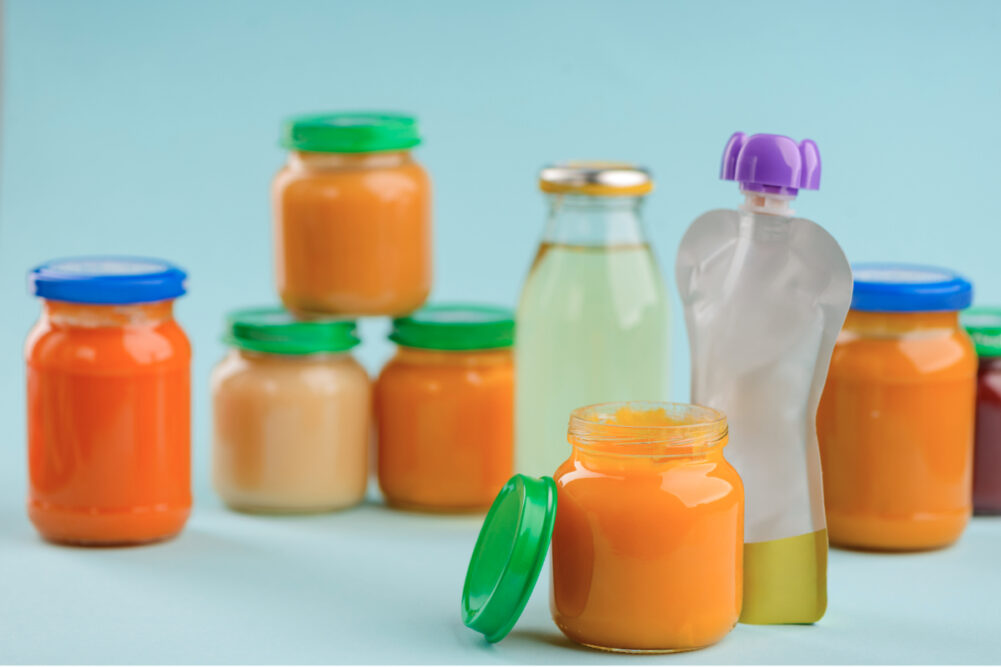WASHINGTON — Prodded by a scathing House subcommittee report issued Feb. 4 charging baby food manufacturers were marketing products they knew contained “dangerous levels of toxic heavy metals” and a subsequent request from lawmakers for technical guidance on legislation they have drafted on this issue, the Food and Drug Administration on March 5 announced new and more aggressive actions aimed at further reducing toxic elements in foods for babies and young children.
The FDA statement was issued jointly by Janet Woodcock, MD, the FDA’s acting commissioner of food and drugs, and Susan T. Mayne, PhD, director of the Center for Food Safety and Applied Nutrition.
The Feb. 4 report issued by the House of Representative’s Committee on Oversight and Reform’s Subcommittee on Economic and Consumer Policy under the chairmanship of Representative Raja Krishnamoorthi of Illinois generated considerable national attention.
Since the report was released, Mr. Krishnamoorthi has been joined by Representative Tony Cárdenas of California and by Senators Amy Klobuchar of Minnesota and Tammy Duckworth of Illinois in drafting the Baby Food Safety Act of 2021, which Mr. Krishnamoorthi submitted to the FDA on Feb. 23 for its review. The lawmakers asked the agency to respond with technical guidance “to strengthen the effectiveness of the legislation.”
The lawmakers also called on the FDA to use its existing authority to regulate toxic heavy metal content in baby food.
Dr. Woodcock and Dr. Mayne in their statement acknowledged the subcommittee report “highlighted important questions on what more can be done to reduce toxic elements in baby food.”
Dr. Woodcock and Dr. Mayne said the FDA on March 5 dispatched a letter to industry reminding manufacturers of food for babies and young children of their responsibility to consider risks from chemical hazards, including toxic elements, when conducting a hazard analysis. The FDA said manufacturers are required to implement controls to significantly minimize or prevent any identified chemical hazards.
In their public statement, Dr. Woodcock and Dr. Mayne said, “Ultimately, we want consumers to be reassured that manufacturers of foods for babies and young children have a legal responsibility under the Federal Food, Drug, and Cosmetic Act to ensure the safety of their products.”
Additionally, the FDA announced it soon will put into action a plan aimed at reducing toxic elements in foods for babies and young children to levels as low as is reasonably possible.
“We share the public’s concerns for the health of America’s children, and want to reassure parents and caregivers that at the levels we have found through our testing, children are not at an immediate health risk from exposure to toxic elements in food,” Dr. Woodcock and Dr. Mayne said.
The FDA administrators said the agency’s action plan will address the following areas:
- Issuing guidance to identify action levels for contaminants in key foods, with plans to revisit those levels on a regular basis and lower them if appropriate, as well as providing guidance to industry on how to meet their obligations under current regulations.
- Increasing inspections and, as appropriate, taking compliance and enforcement actions.
- Boosting sampling of foods for babies and young children, including sharing results.
- Working with government, academia and industry to support research and development of additional safety information on toxic elements in foods for babies and young children and additional steps that industry can take to further reduce levels.
“Our new activities will further efforts that the agency has continued to take in this area, including our work in 2020 to finalize an action level for inorganic arsenic in infant rice cereal,” Dr. Woodcock and Dr. Mayne said.
“We’ll be working to develop additional action levels, finalize our draft guidance on reducing inorganic arsenic in apple juice and publish a draft guidance that will establish action levels for lead in juices,” they added. “These activities, along with an increase in sampling and reporting, will help continue to drive down levels of toxic elements in food.”
The FDA again pointed out toxic elements are present in the environment, including air, water and soil, and therefore are unavoidable in the general food supply.
“This is why another part of our plan is to ramp up availability of consumer information and resources that underscore how the key to a healthy diet including for infants and young children is variety,” Ds. Woodcock and Dr. Mayne said.
“The FDA does not recommend throwing out packaged foods for babies and young children or eliminating certain foods from children’s diets,” they continued. “The agency recommends that parents and caregivers speak with a pediatrician about a diet that includes a variety of age-appropriate food in order to get needed nutrients.”
Responding to the FDA’s letter to industry and public statement, Mr. Krishnamoorthi said, “Today’s announcement sends the message that we will not put up with anyone hurting our kids. We presented evidence of a pervasive problem of toxic heavy metals in baby foods, and the Biden administration’s FDA began to address it within a month. This represents a welcome change at FDA. Now that we have partners in the public health agencies, it’s reason for optimism for what we can accomplish going forward.
“However, we are disappointed that FDA failed to commit to establishing concrete rules to remove toxic heavy metals from all baby foods. It highlights the need for Congress to pass legislation with strict standards and timelines. Babies don’t have time to wait for FDA to fill in details.





